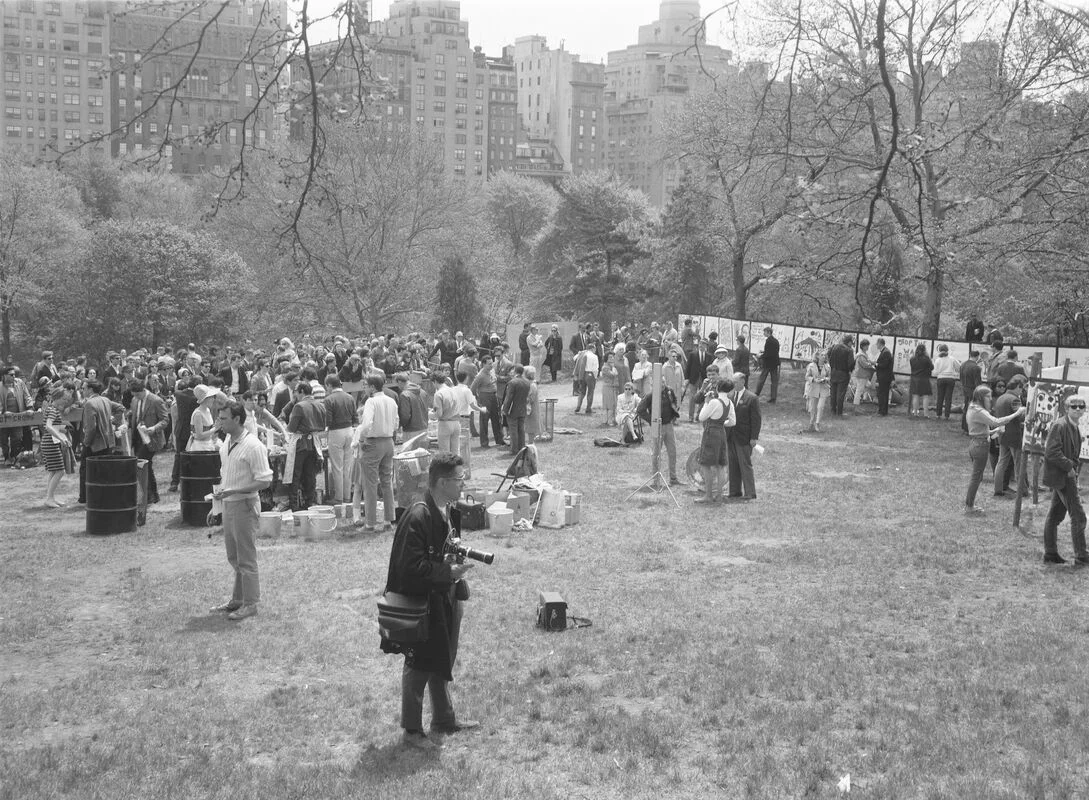Happenings: Art, Play, and Urban Revitalization in 1960s Central Park
By Marie Warsh
On November 16, 1966, an unprecedented event took place on the Sheep Meadow in Central Park. Beginning at midnight, thousands of New Yorkers convened on the park’s largest lawn to watch the Leonid meteor showers, which were expected to be particularly brilliant. Although the crowd was let down — dense cloud cover prevented visibility — the gathering nonetheless offered a convivial atmosphere. Spectators brought chairs, blankets, and hot beverages, and the event became an after-dark picnic, with some marveling at the novel scene. One woman observed, “All these people in the park after midnight, and no one is getting mugged.”
Read More










